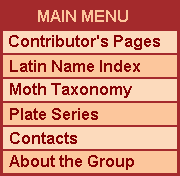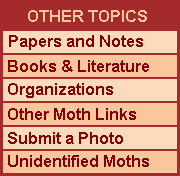|
The purpose of this page is to permit discussion of ideas regarding effective display of photographs of genitalia of moths.
Richard, Bill Taft asked me whether his photograph, the first one shown below, was "good enough" for the MPG website. I know nothing about the relative goodness of genitalia photos, but I have some gut feelings that I will express here. Correct me or chastize me, I realize that I might be wrong.
I'm fairly certain that Bill's photos will be good enough. The question in my mind is whether our presentation of genitalia photos is "good enough." My feeling is that such photographs, unless accompanied by adequate descriptive text, serve little purpose. They may be good enough for the experienced, trained scientist or labratory worker, but if they do not serve to teach the neophyte and aspiring collector, then they fail to contribute to what the mission of this website ought to be.
A single genitalia photo (standing alone on a webpage) with no explanation of how it helps to identify a species, is of no use to 95% of the people who visit this website. It is possible for someone who knows a group to prepare a plate or page that shows the genitalia of two or more species and which describes the important differences that can be seen in the photographs. I do not mean that Bill Taft should create plates or complex arrangements of photos. I can easily do that if given instructions about what to incude in a presentation. By the way, I modified Bill's photo by sharpening the focus and also by painting out shadow areas below and to the right of the genitalia.
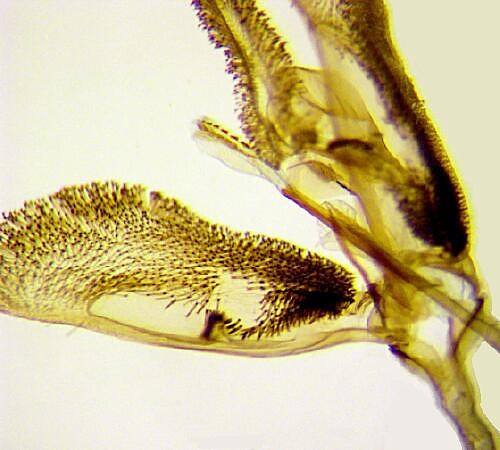
2609 - Carmenta querci  Arizona © William Taft Arizona © William Taft
|
|
The four photos shown below are presently on four separate genitalia species pages. No text accompanies the photos. I presume they are excellent photographs of well-prepared material. How do you tell one of these apart from the others. If these are closely related species, wouldn't it be better to show them as a group and point out in text and/or with arrows salient features that distinguish each species?
|
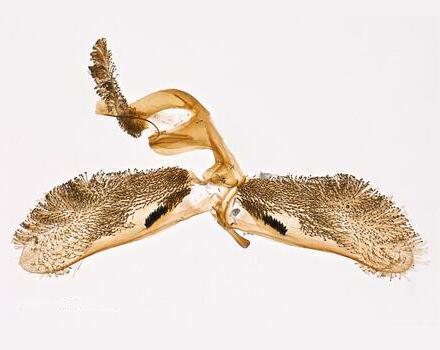 2549 - Synanthedon scitula
2549 - Synanthedon scitula  © Eric LaGasa © Eric LaGasa
|
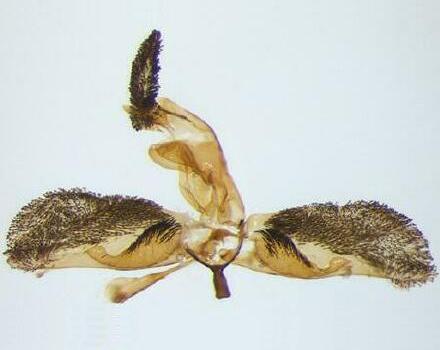 2561 - Synanthedon culiciformis
2561 - Synanthedon culiciformis  © Eric LaGasa © Eric LaGasa
|
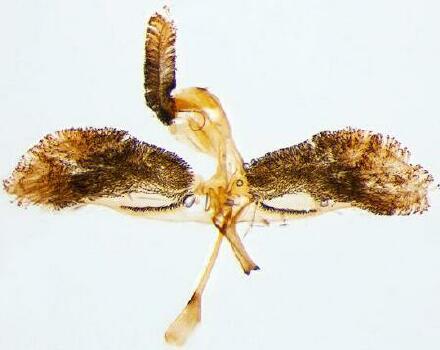 2570 - Synanthedon albicornis
2570 - Synanthedon albicornis  © Eric LaGasa © Eric LaGasa
|
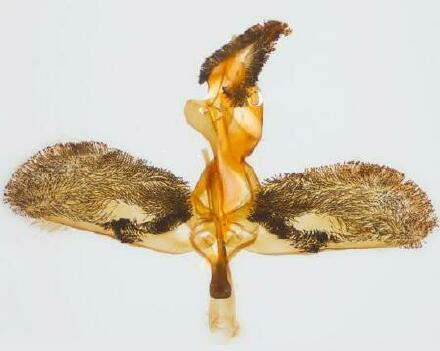 2584 - Synanthedon novaroensis
2584 - Synanthedon novaroensis  © Eric LaGasa © Eric LaGasa
|
|
My guess is that the photographs (above) are somewhat larger than they need to be, and that an arrangement similar to the one below could be satisfactory. Two to six photographs could be grouped along with appropriate text.
|
|
